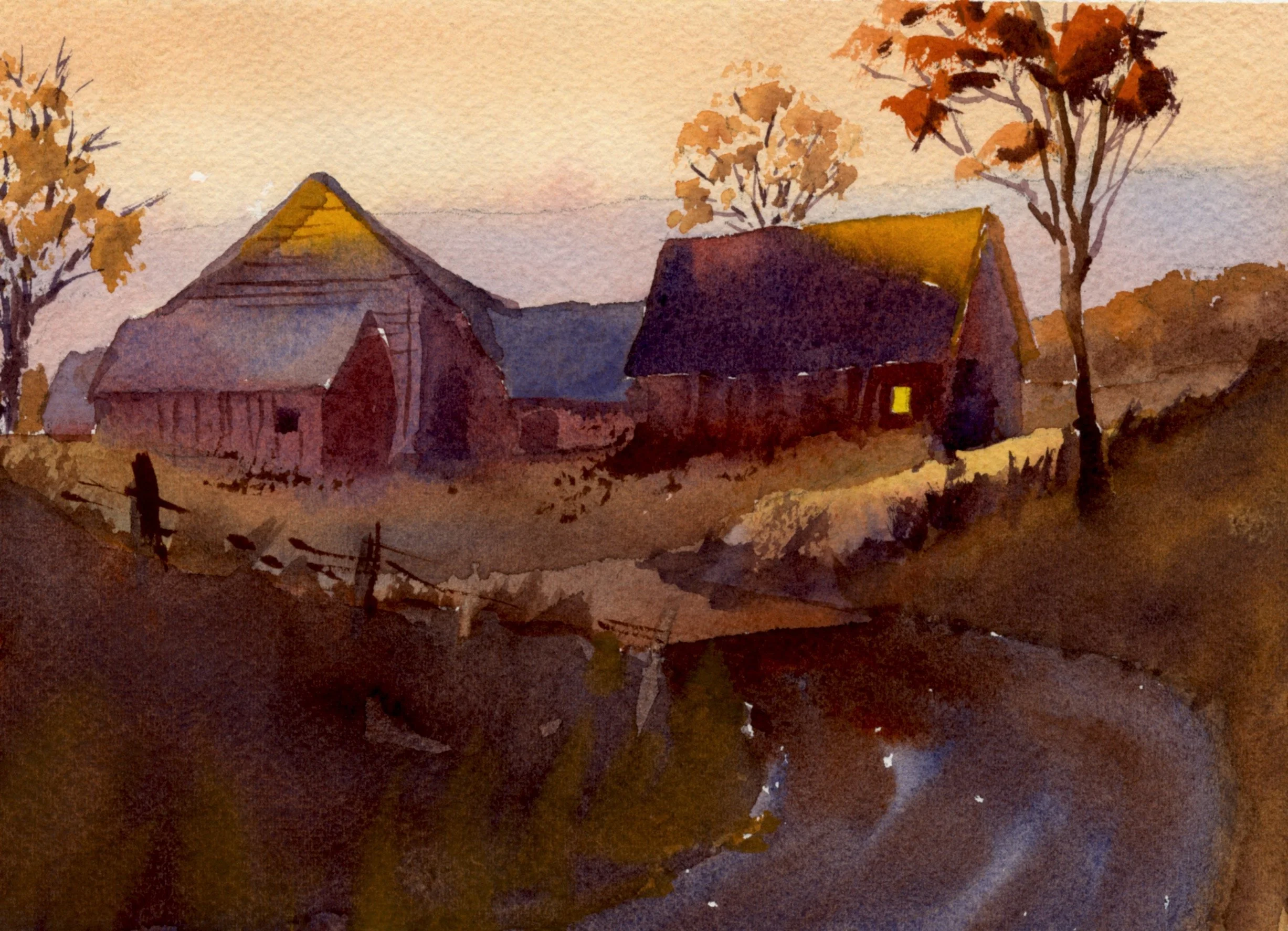A Simple Composition Secret From The Masters
“Uphill Farm” - watercolor on paper, 2025, Tony Conner
The Not-So-Obvious In Great Paintings
If you have an interest in art, there is a good chance you look at many paintings – in books, online, in museums and galleries. While you may have seen many paintings and masterworks, it may not be obvious that just about all have relatively simple value compositions underlying their structure.
In fact, centuries of close observation and analysis have made it clear that a relative handful of value patterns appear over and over. Many of them are so simple, it is hard to fathom the compositional strength and visual dynamism of their structures.
One particular arrangement is prominent in landscape and seascape paintings. Take a look at the image of Winslow Homer’s painting “Fishing The Rapids”, below.
“Fishing The Rapids” - watercolor on paper, 1899, Winslow Homer
The painting is apparently about fishing, based on the title. However, the most obvious sensation is movement and the power of the rushing river. What’s not as obvious at first, is the simple value composition that supports and unifies the picture plane, allowing the complex, energetic brushstrokes that animate the rushing current.
“Fishing The Rapids” - value composition
Focus On Value Composition
The image above has color information removed, leaving only value behind. In this version, it is much easier to see how the picture plane has been roughly divided into three areas - the bottom 1/5th, the middle 1/3rd and the top half. Each area is a two-dimensional shape. Together, they represent the illusion of a third dimension - depth - and a different plane of space within that depth. The bottom shape represents foreground space, the middle shape represents middle-ground space, and the top shape represents background space.
Each shape/plane of space has its own value or, more accurately, narrow value range. The bottom shape, representing the foreground plane of space, includes mostly dark values. The middle shape, representing middle-ground plane of space, is mostly light values. The top shape, representing the background plane of space, includes mostly middle values.
Value Patterns That Work
As mentioned, this pattern is very common in landscape and seascape scenes because it is a very simple way to accomplish two goals : designing the picture plane with a strong and dynamic structure, and easily representing distance with discrete planes of space. It appears so often in works of art that it is considered one of four standard value compositions. Any source that includes illustration and description of more than one value pattern, will include this one first and title it “Value Pattern I”. Many books on painting include only this one.
The method and underlying principles for this pattern are simple. As in Homer work shown above, the picture plane is divided roughly into three areas: foreground, middle ground and background. A single value – light, dark, middle gray – is applied to each. The resulting combination of three shapes and three values can create six different patterns. These are shown in the image below. The concept is simple and the effect is powerful.
The centuries of research that identified this value pattern identified three others as well. If you are interested in a brief introduction to all, download this reference info sheet.
The six arrangements of Value Pattern I
THE REAL DIFFICULTY
Many watercolor artists begin to look at composition ideas once they’ve progressed beyond the beginner level. Often, value composition is the first idea they run across because it is offered by many workshop instructors and is found in many painting books.
If your are just beginning to explore the ideas and benefits of value composition, you’ll likely find that the most difficult part is the mental part. Humans are literalists! We all are inclined toward reality in our thinking and this tendency spills over into our painting.
It is difficult to separate the reality– or what we believe is the reality – of our subjects from the idea that our painting is actually a two-dimensional design . Design is an exercise in simplification and, thereby, abstraction. It very much requires a change in our thinking.
This change in thinking comes with practice and experience in composition.




